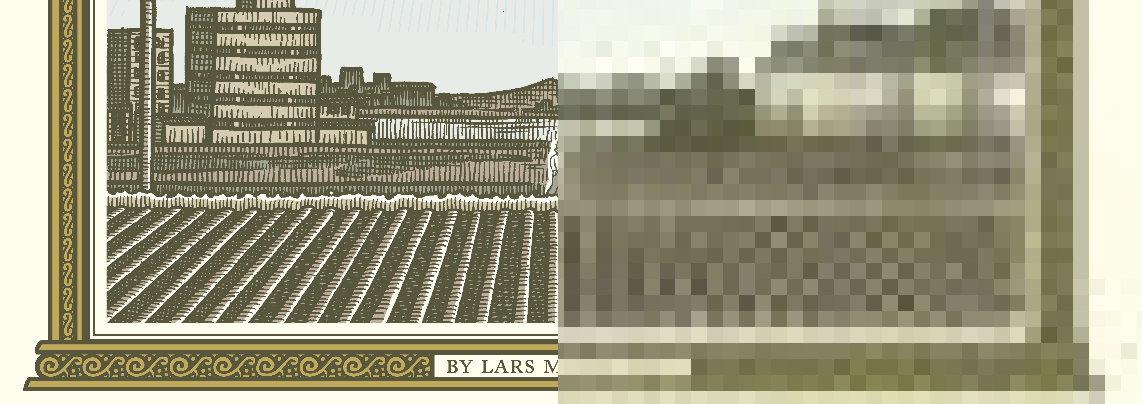 Pictured: Images of Tonoharu’s covers at a fraction of their actual size.
Pictured: Images of Tonoharu’s covers at a fraction of their actual size.
The new paperback edition of Tonoharu: Part One sports a completely redesigned cover. One of the main reasons for the overhaul was to fix an issue I had with the original design.
I designed the hardcover in early 2007, so more than seven years ago (wow). This was before the iPhone and Kindle were introduced. MySpace was still the leading social network. I was still in the demographic that marketers care about (ah, 18-34 year olds, how I miss your privileged company).
But in terms of design considerations, the most significant difference is this: in 2007, the vast majority of books were purchased from brick-and-mortar stores, whereas now most are purchased online.
The original Tonoharu hardcover was designed to evoke ordinate nineteenth century etchings. Its strength lies in all the neat little microscopic details waiting to be discovered and lost in. Its weakness is that it’s static and symmetrical, and composed entirely of washed out colors. It lacks dynamism and doesn’t really “pop”.
In short, it’s a design that only works if you can inspect an actual physical copy of the book before you buy it.
Even in 2007, this was less than ideal. But now, most buyers don’t see the actual cover until a book is shipped to them. Prior to that, all they ever see is a “thumbnail” (a postage stamp-sized reproduction) on a computer screen.
The thumbnail presentation obliterates Tonoharu’s hardcover’s one strength. At this reduced size, all of the fancy details turn into mud, leaving just a tombstone-shaped blob.

Pictured: Tonoharu: Part One detail compared to Amazon.com thumbnail (Click to Enlarge)
So with the new design, I wanted something that would still have a presence even when displayed at a fraction of its actual size. I went with bright primary colors, a san-serif font, and an art-deco inspired design. I also cut down on the ornamentation to give it a more streamlined look.
At the same time I didn’t want it to be too sparse, so I created an intricate background pattern that weaves into the dotted lines that run through the design.
But for all the changes, the new design does harken back to the original design. I brought back the sun motif and illustrations from the hardcover, and used the same serif font for the back cover.
Being a perfectionist, I could tweak the design forever, but for the most part I’m pretty happy with how it turned out. I think it strikes the right balance between reducing well and still having some neat details.
I’m curious, dear readers, which version of the cover do you prefer?
